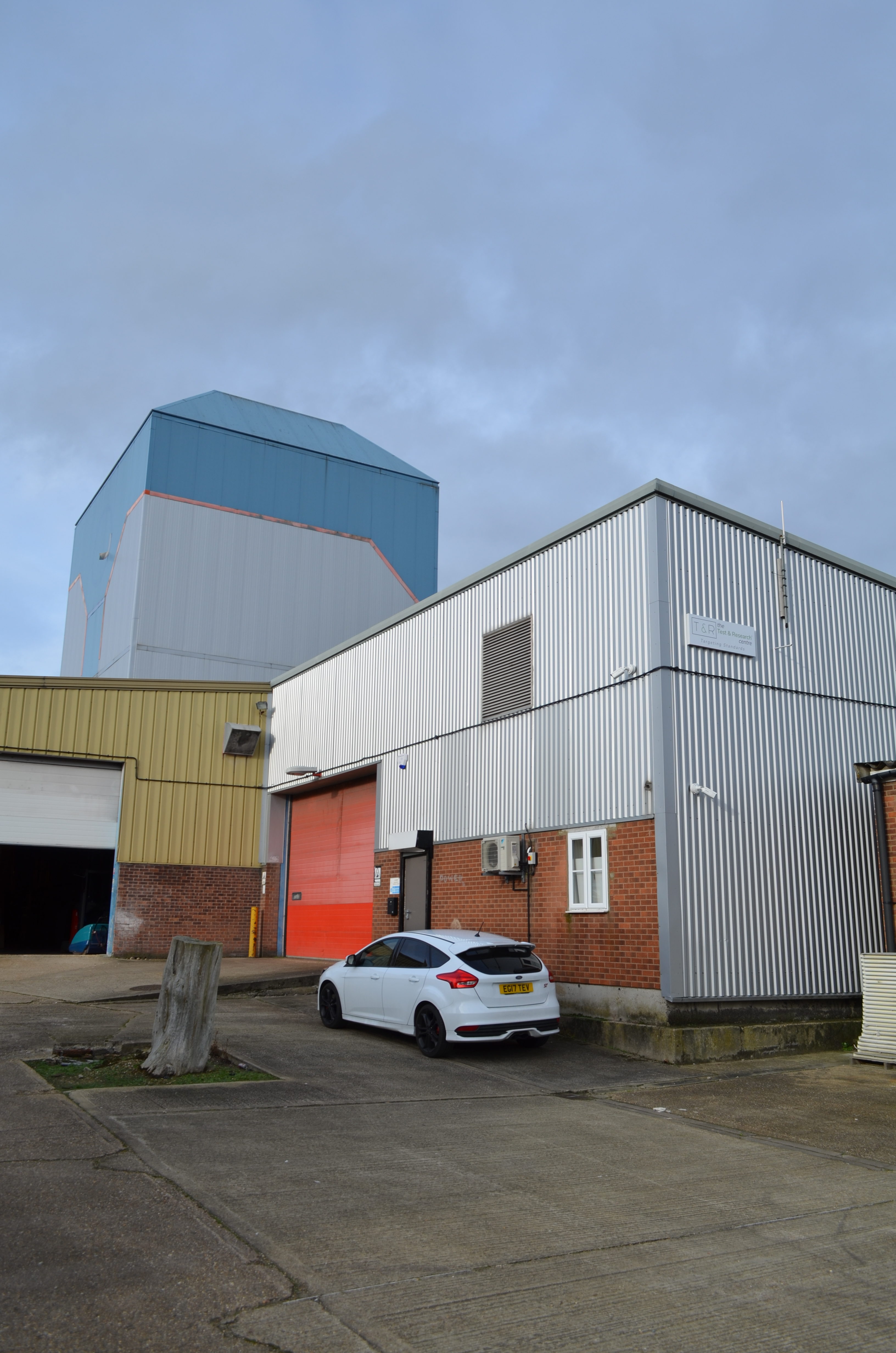We formally opened the Test & Research Centre (T&RC) in February 2020. It’s a new organisation funded and supported by the Ladder Association. Through product testing and research, we want to help portable ladder users stay safe.
In March, we were contacted by Trading Standards Officers (TSO) from Suffolk Trading Standards Imports Team. They have responsibility for inspecting products arriving into the UK from the Port of Felixstowe. It’s the UK’s largest container port handling over 28 million tonnes of goods each year.
Whilst the Suffolk TSO’s were investigating a suspect shipment, they identified 2 ladder products which claimed to be compliant to EN 131. Both were multi hinge-joint ladders which fall under the scope of EN131-4.
EN 131-4 is the part of EN 131 which contains requirements for single or multiple hinge-joint ladders. Initially the ladders were held at the port due to missing the name and address of the producer and batch identification – both offences under Regulation 7 of the General Product Safety Regulations.
On further examination, the TSO’s had other concerns about these ladders. They questioned the ladders conformity with EN 131-4, so they contacted T&RC for advice. After initial discussions, we agreed to undertake what’s called “Critical Safety Fault Testing” of these ladders.

Trading Standards use expert laboratories for independent reports on suspect products. Clearly TSO’s cannot be experts on every product they are likely to encounter. So it makes sense to use independent laboratories to report on product conformity. These independent reports can then be used as evidence by Trading Standards.
Products placed on the market have minimum safety requirements either in law or product standards. The requirements can be numerous. So it’s not always viable for Trading Standards to have a suspect product checked against every requirement. In these cases, tests or requirements likely to demonstrate safety critical faults are chosen.
For the suspect ladders, we agreed on dimensional checks, markings, user instructions and strength tests. Within a week, we had checked the suspect ladders against EN 131-4 and the test reports provided to Suffolk Trading Standards.
What we found was quite alarming.
Both products we tested had labels with EN 131 on them. However both products failed on several dimensional requirements. This included the width of the base stabiliser bar and the height of the product in platform mode (max 1 m, measured at 1.2 m).
Products compliant to EN 131 must have labelling and an instruction manual. The labelling on both was limited and was not in accordance with EN 131-3 – the standard for markings and user instructions. Only one of them had an instruction manual. Even then, it did not contain anywhere near enough information to explain how to use the product correctly and avoid known risks and hazards.
More worrying was the failure of both products against the strength tests. The first product we tested did manage to survive the first few tests, albeit failing nearly all of them, before structural failure occurred. The rungs collapsed as we applied the test load and the stiles failed on the roller skate test.
The second ladder suffered structural failure at the very first test. The test should measure how close the ladder can spring back to its original unloaded position after removal of the test load. In this case, it was never going to come back! On further inspection it’s not surprising, because the stile material was only 0.87 mm thick at the smallest measurement recorded. The standard requires a minimum thickness of 1.2 mm.
Our testing has helped Suffolk Trading Standards Imports Team prevent dangerous products entering the UK market. 266 of them to be exact.
It’s highly likely that these products were destined to be sold through online stores. Consumers would be reliant on the manufacturer’s labels stating EN 131 compliance as the only demonstration of conformity.
Up to now, Trading Standards have not had a viable solution for an independent laboratory to test ladders. But it does now.
T&RC General Manager, John Darby, has this to say about the work:
“It has been several years hard work to get the Test & Research Centre to where it is now. After all that hard work, to be able to help Trading Standards as one of our first clients has made it all worthwhile.”
“The industry felt that there was a problem with imported ladders not meeting the standards. Above all, they felt strongly enough about it to support the start up of the Test and Research Centre. It appears from this work their concerns were correct. We’re looking forward to helping Trading Standards in what ever way we can going forward.”
“Ladders fall under the General Product Safety Regulations in the UK. Product producers and suppliers must ensure that products placed on the market are safe. If you are buying and importing ladders into the UK, its good practice to verify what the Manufacturer has told you. Independent certification, together with batch testing, would give suppliers confidence in the supply chain, and would have prevented these dangerous products attempting to enter the UK”.
If you are a Trading Standards Officer, supplier or importer who needs help with ladder testing, or have questions about ladders in general, please get in contact.
Are you a Trading Standards officer with a suspicious ladder? Do you import ladders from outside the UK? Then we can help. We are a not-for-profit testing and certification body, with the aim of helping to make products and their users safer.
34 Regal Drive, Soham, Cambridgeshire, CB7 5BE.
A UK-based Certification Body, Test Laboratory and training facility that specialises in access equipment.